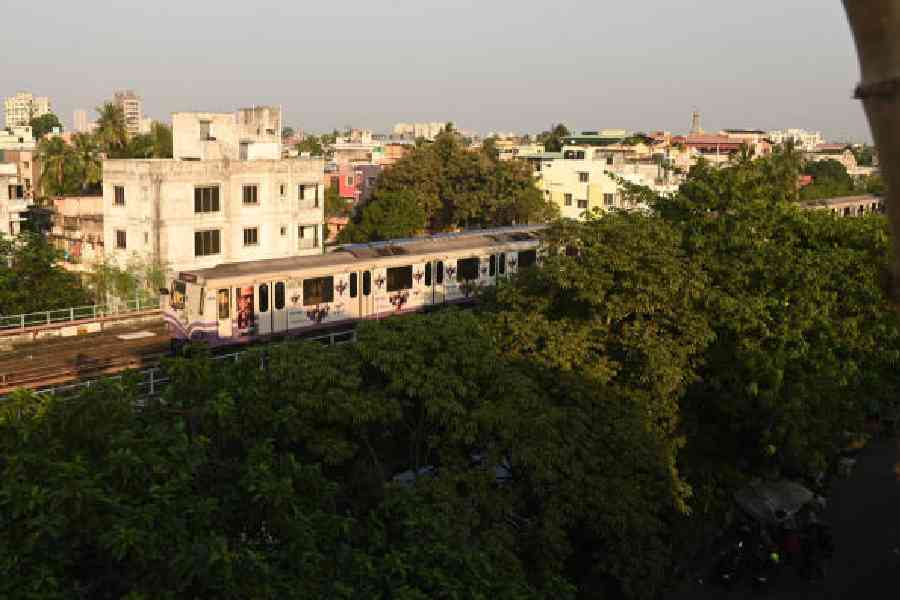The Metro Railway is set to introduce a new technology in the doors of all trains in its existing fleet, one that will prevent a person from getting trapped and being dragged by the closing doors.
An accident like this had killed a passenger at Park Street station in July 2019. In December 2023, a 35-year-old woman died after her sari got caught in the doors of a Delhi Metro train at the Inderlok station.
A concerted effort to enhance passenger security gained momentum following the Delhi Metro accident.
The anti-drag technology has undergone a trial in Delhi. In Calcutta, the trains in the existing fleet have to be retrofitted with the system.
According to Metro sources, the first batch of trains equipped with the system is expected to be ready for the Blue Line by July next year.
“Anti-drag is an advanced feature. If, by accident, any part of the dress or other item gets stuck in the doors and the train starts, then a force will be applied on the doors and the train will automatically apply the emergency brakes and stop,” a railway official said.
The spokesperson for Metro Railway told this newspaper: “The Railway Board has sanctioned work for the inclusion of the anti-drag features in all the rakes available with Metro Railway, Kolkata, at present on a retrofitment basis in the Blue Line. A tender will be floated shortly. The ICF has already been advised to include the above features in all upcoming rakes fitted with the communications-based train control system (CBTC). The ICF is taking necessary action in this regard so that the CBTC rakes are provided with these anti-drag features from day one.”
The carrier wants the safety feature on trains across all links in phases, he said.
A German manufacturer of braking systems for rail has built the system. Engineers of the company will retrofit existing Metro trains with the feature. The technology was recently displayed at an industrial fair in Delhi.
On July 13, 2019, the closing doors of a Metro train trapped the right hand of Sajal Kumar Kanjilal, 66, at Park Street station.
Kanjilal had made a last-moment attempt to board the train. His right fist, in which he was clutching the token, was inside the compartment, while the rest of him was outside as the train started to move. The train dragged the rest of him along the platform to his death and threw the body into the tunnel.
Metro officials had later said Kanjilal’s fingers, not his palm, were stuck between the flaps. The fingers were within the tolerance limit, which allows a train to run despite the gap between the leaves of a door, they had said.
On December 14, 2023, a woman fell under a Metro at Delhi’s Inderlok station after her sari got stuck between the train’s doors. She succumbed to her injuries at Safdarjung Hospital two days later.
“This anti-drag technology will prevent any such accidents. Any movement despite an object stuck in the doors will be a cue for the application of emergency brakes,” said a Metro official in Calcutta.
Doors not closing properly at once due to overcrowding is a familiar problem in the rush-hour Metro. More often than not, it is something belonging to a passenger inside that gets stuck in the doors. Usually, in such a situation, the train does not move until the doors shut properly after the niggle is removed.
“That is a censor-based obstruction detection mechanism. But it is not enough for the safety of a passenger stuck on the platform,” said the Metro official.











